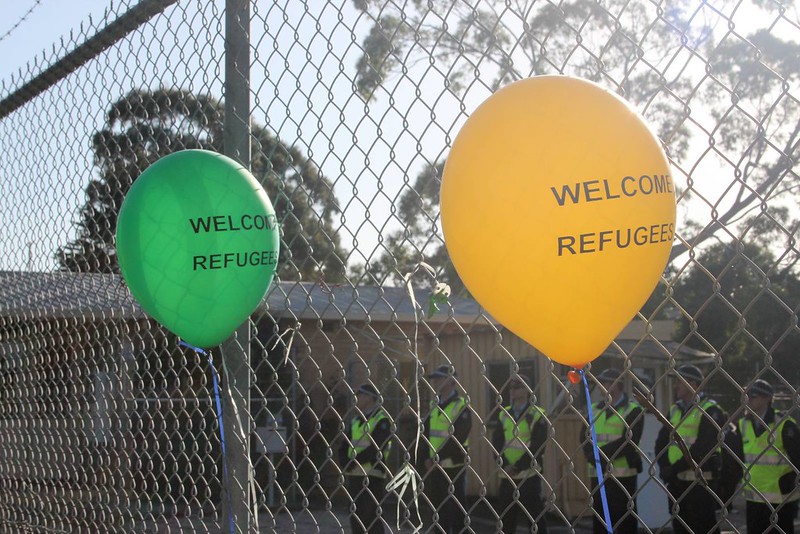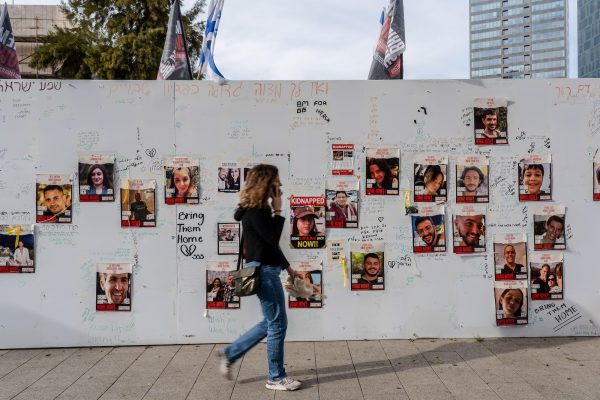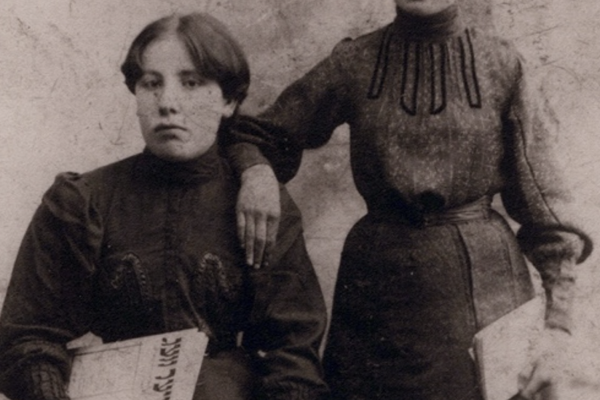Top-ranked tennis player Novak Djokovic’s visa woes in Australia have captured international headlines, but behind this story of elite special treatment lurks a genuine humanitarian disgrace: for years, the Australian government has used island jails as well as commercial hotels—including the one where Djokovic was held—as long-term immigration prisons. Those detained in these facilities are caught in limbo, hostages of a hardline border security policy that dresses up indefinite detention and the circumvention of international refugee protections in the guise of humanitarian deterrence. Political leaders say they are out to “stop the boats,” to break the business model of “people smugglers,” and to “end deaths at sea,” but reality belies their rhetoric. Like Djokovic, refugees and asylum seekers are told that they are “free to leave [the country] at any time,” yet unlike Djokovic, they have no safe place to go.
The roots of this outrage stretch back through twenty years of cruel and increasingly preposterous anti-immigrant policy in Australia. In September 2001, in the weeks following the 9/11 attacks in the United States, Parliament passed legislation “excising” several Australian territories from the country’s immigration zone. This legal tactic limited the ability of people arriving to such places to seek asylum and, in the view of the Australian government, permitted immigration officials to relocate boat-borne migrants apprehended there to island prisons in Papua New Guinea and Nauru—countries formerly ruled by Australia but now independent—for detention and processing.
In the years following these policies, more migrants began arriving by boat to the Australian mainland itself, and in an absurd move to preserve the offshoring scheme, the government “excised” the Australian mainland itself from its immigration zone in 2013. As a direct result of this change, more than 3,000 people have been transferred to detention in Nauru and Papua New Guinea. Around the same time, the government also amped up its naval effort to deter boat arrivals to the mainland with Operation Sovereign Borders, which has turned back at least several hundred migrants since 2013. All the while, Parliament has repeatedly passed legislation that increases ministerial power over people detained and hollows out the visas for which asylum seekers are eligible—efforts carried out with the explicit aim of ensuring that no asylum seekers arriving by boat will be resettled in the country.
These schemes, political geographer Alison Mountz writes in her recent book The Death of Asylum (2020), are “among the most draconian and extreme of offshoring practices in the modern history of externalization.” (The latter term refers to the extension or “externalizing” of immigration controls beyond land borders in an effort to keep migrants from setting foot on territories that would trigger legal protections—a practice also carried out by the United States and the European Union.) The human toll is immense. When the humanitarian organization Médecins Sans Frontières (MSF) established a clinic on Nauru in late 2017, it found that 60 percent of refugees and asylum seekers there had suicidal thoughts, a similar proportion had moderate or severe depression, and 30 percent had attempted suicide, including children as young as nine. “The mental health suffering on Nauru is among the most severe MSF has ever seen,” the organization stated, “including in projects providing care for victims of torture.”
This state of affairs has been the direct result of the hardline stances of the country’s two major political parties: the conservative Liberal Party and the center-left Labor Party. Both have thrown support behind extreme measures meant to deter asylum claims, making it all but impossible to increase protections for migrants, notwithstanding dissent from Greens and some independents.
A rare if small step forward came in February 2019 when Member of Parliament Kerryn Phelps, a physician and former head of the Australian Medical Association, introduced what became known as the “Medevac Bill,” which revised procedures for bringing migrants detained offshore to the Australian mainland for medical treatment, increasing the role of doctors and weakening the role of government officials. The governing Liberal-National coalition decried the proposal, saying it would end sovereign control of the nation’s borders, but strategic maneuvering helped push the bill through in March 2019, and over the next ten months hundreds of refugees detained on Nauru and Papua New Guinea were transferred to Australia under its auspices. By December, however, political winds had shifted, and the government repealed the bill.
It is this perverse move that has led to the current situation. Before the Medevac bill, hundreds of refugees detained offshore had received medical transfers. Some were returned after their treatment, while others were placed in somewhat laxer “community detention” on the mainland or—with the help of legal teams and public campaigns—were able to access temporary visas. Today, with political conditions not favoring offshore returns (due in part to COVID-19 and to the recent collapse of offshore detention arrangements with Papua New Guinea), and with the Australian government embittered by the initial Medevac defeat, parliamentary rivalries are driving policy—leaving the Medevac cohort of beleaguered refugees trapped in the limbo of hotel complexes.
The story that exposed this practice broke in December 2019 with the headline, “Most people transferred under medevac law now living in hotels, apartments”—inaccurately conveying comfort, freedom, and public largesse. The ensuing months would go on to confirm hotels had received stable, ongoing contracts for long-term indefinite detention, not for brief stopovers or transitional arrangements. In late 2020 Mardin Arvin, a Kurdish author and translator, wrote poignantly about what this detention was like. At the time of his writing, he had been involuntarily confined in one hotel in Melbourne for roughly ten months. He would spend another three months there—and five weeks in another hotel—before he was released. His confinement followed more than six years of detention in Papua New Guinea, first on Manus Island and then in the capital, Port Moresby.
This immigration regime is at once a humanitarian disgrace, a failed deterrence policy, and an expensive business: it costs an estimated AUD $471,500 a year, per person, to imprison refugees in a mainland hotel, and annual costs of offshore detention have regularly exceeded AUD $1 billion. Still, the regime has no apparent end in sight. Through a freedom of information request, refugee lawyer Alison Battisson found that, in the eighteen months that one of her clients had spent in a hotel prison, only two emails had been sent about the possibility of their release. “They are taking revenge on each other by sacrificing our lives,” said Farhad Rahmati, an Iranian refugee and outspoken activist who until February 2021 was imprisoned under this system. He has since gained a protection visa from the United States, but others’ fates have been less certain. As of October 2021, 228 people were still detained in Papua New Guinea or Nauru, while hundreds more were on on temporary visas or detained on the mainland. Some 30,000 others caught up in the system have similarly uncertain futures.) Most of those detained offshore have been formally recognized as refugees through a determination of their status under international law. Their need for permanent protection has thus been acknowledged, but Australia is not meeting its international obligation to provide it.
In the bureaucratic language of Australian’s immigration code, the refugee prison hotels are known as “alternative places of detention” (APODs). Already in 2008, scholar Joseph Pugliese had highlighted “the inventiveness of the Department of Immigration in its ability to transmute various modalities of civilian accommodation into prison-like structures.” Though the AOPD classification has been applied to various buildings for decades, legal limits remain vague. According to the Department of Immigration, APODs are “places that have been specifically authorised for immigration detention that are not an IDC [immigration detention center], IRH [immigration residential housing] or community detention” such as schools, hospitals, hotels, and even correctional facilities. In an Orwellian sleight of hand, APODs are thus places “for” “detention” that are nevertheless not “detention centers,” and they are defined with no limitations on their nature or length of service.
The precise conditions of detention depend on the hotel site. Some have bunk beds, some doubles. There has been room-sharing and solo occupancy. Some have rooms that open onto balconies, while others have no access to fresh air. One tower block allegedly had refugees detained seventy floors up.
The Mantra Bell City Hotel, in Melbourne’s northern suburbs, exemplifies how, in criminologist Claire Loughnon’s words, “everyday places and practices of violence are achieved” in quotidian spaces. The Mantra has an imposing and impersonal gray edifice made up of different wings, like a giant trivet of concrete and glass. A former hospital, it is surrounded by a parking lot and looks onto four lanes of busy traffic. Refugees had to wage a months-long campaign to be permitted to open their windows by fifteen centimeters. After serving as an APOD for roughly 18 months, the Mantra’s contract expired in December 2020, and all detainees housed there were moved to other hotel prisons.
In contrast with the Mantra, Kangaroo Point Central Hotel and Apartments in Brisbane afforded refugees and asylum seekers the chance of being seen from the outside. When the hotel’s detention contract started in 2019, detention use was only part of this “totally ordinary motel.” Later, as COVID-19 measures reportedly required reducing the occupancy of another detention facility, the the immigration department took over the whole complex, and refugee supporters established a protest blockade. A conjoined balcony gave refugees the option of standing where supporters could see them, with their own banners and protest signs. One man, Saif Ali Saif, would wave to his wife and three-year-old child, who were living only twenty minutes from the hotel prison. The hotel’s use as a detention facility ended dramatically last April when the owners of the building contested Kangaroo Point’s deal with Serco, the private security firm that manages Australian immigration detention.
While most of the Medevac cohort were unaccompanied men, several couples and families were also transferred to Darwin, in far northern Australia, where they were detained in transportable cabins. In the face of these conditions one couple requested a return to Nauru, decrying a lack of “dignity and respect.” Another couple was detained for over a year in a nine-square-meter room with a bunk bed, which due to their medical conditions they could not climb, so one slept on the floor.
The largest remaining hotel prison appears to be the Park Hotel in Melbourne, where Djokovic was detained. Infection leaks from this building when it served as a COVID-19 quarantine facility were responsible for more than 90 percent of the state of Victoria’s second wave. It sits, with heavily tinted windows, on the north-east corner of a green square just a few minutes from the city center and alongside the campus of the leading university in Australia. It is perhaps the most impenetrable of the sites described here, though there may well be others even more hidden from view. When the Park’s detention contract came into effect in December 2020, it held around 65 men, bussed over under heavy police escort from the Mantra; 11 remained by April 2021, but a month later, with the closure of Kangaroo Point and the transfer of other detained refugees mostly from Adelaide, the number rose to 35. Such shuffling has become routine. Ramati was moved eight times in eighteen months within two states; across the immigration detention system, there were 8,000 involuntary movements between July 2017 and May 2019. These moves often happen without warning and in the dead of night.
Australia is not the only country to have used hotels for immigration detention. In July 2020 it was revealed that U.S. Immigration and Customs Enforcement (ICE) had been using commercial hotels to detain children and families taken into custody at the Mexico border, placing them under the supervision of private contractors. According to an investigation by the New York Times, at least 860 people—again, mostly unaccompanied minors or parents with their children—had been detained at hotels from brands including Best Western, Hilton, Quality Suites, Hampton Inns, Choice Hotel, Econo Lodge, and Comfort Suites Hotels. A backlash followed. Petitions and union action applied pressure, and the American Hotel and Lodging Association (AHLA) issued a statement condemning hotel detentions. The Hilton group, from which several U.S. venues had been used, blamed franchise holders for the detention contracts. “This is not activity that we support or in any way want associated with our hotels,” it declared.
No such reaction has been seen in Australia. The Accommodation Association of Australia, which claims to represent over 80 percent of all known accommodation providers in the country, has been silent. At times protests have broken out both inside and outside the hotel prisons, leading to sharp confrontations with police and more shadowy and surely more menacing repercussions for those held within. The Park Hotel has been periodically chalked up with graffiti: Refugee prison. Torture center. Shame. Protesters outside hold signs: “Free our friends,” “We won’t stop until you are all free.” Where protests have been the most sustained—at Brisbane’s Kangaroo Point and Melbourne’s Mantra—they seem to have been successful in generating public pressure for the closure of detention contracts, but by far the largest mobilization has occurred not for an end to arbitrary and indefinite imprisonment of refugees but in defense of their access to mobile phones.
On the other side of the protests is an array of powerful interests. One of the main pillars in the original hotel prison network, the Accor group, is also one of the biggest in the Australian accommodation industry and among the most influential in the association itself. A French-based multinational, Accor owns the Mantra and Mercure chains. AccorHotels Pacific CEO Simon McGrath is Deputy President of the Accommodation Association’s National Board, as well as being Deputy Chairman of the Tourism and Transport Forum of Australia, the peak industry group for the tourism, transport and aviation sectors. He has thrice been awarded “Australasian Hotelier of the Year” by industry publication HM Magazine—in August 2020, as refugees marked a full year detained in one of Accor’s hotels, the magazine even feted “Accor’s Era of Extraordinary” with an effusive cover story—and in 2019 he was named a Member of the Order of Australia, among the nation’s highest official honors.
At the same time, Accor’s profile has sometimes been leveraged to raise public awareness. I helped to coordinate an open letter signed by some 250 individuals, from grassroots activists and international lawyers to the head of the Australian trade union movement, appealing to Accor global CEO Sébastien Bazin “to ensure that Accor Group, its brands, and partners, are no longer complicit in violating the human rights of people who have sought protection from Australia.” Others have called for boycotts of the Mantra and Mercure chains, but opaque contractual arrangements have also made it difficult for authorities to investigate or sanction business owners for potential violations of municipal or other laws. Darebin Council, home of the Mantra Bell City Hotel, initiated an investigation into “any possible breaches of Mantra Bell Hotel planning permit given the hotel has now metamorphosed into a detention centre or virtual prison.” In response to such campaigns, Accor insisted that “these guests are being treated fairly” and “we do not believe that our contract with Serco Asia Pacific is in breach of any human rights principles.”
Many people who have sought asylum protection from Australia have done so in the belief that, as a democratic society, it would respect and uphold their freedom of expression and other human rights. Instead they have discovered a government hell-bent on silencing them. Between lack of government transparency, intimidation of journalists in the name of national security, and a monopoly-dominated media landscape, reporting on asylum issues is terribly fraught in a country the New York Times recently described as “the world’s most secretive democracy.”
As the circus generated by the Djokovic affair shows, even when there is recognition, it is often limited and almost always fleeting. Reporters scrambling for insights on the sports star, they have been reaching out to refugees and asylum seekers. In the words of Mehdi Ali, now detained in the Park Hotel after being sent to Nauru at age fifteen: “It’s so sad that so many journalists contacted me yesterday to ask me about Djokovic. I’ve been in a cage for nine years, I turn twenty-four today, and all you want to talk to me about is that.” Scandal can create attention, but it is unreliable and all too often passes. Strong and consistent reporting in a limited number of outlets has periodically broken through to more mainstream channels. But many outlets simply toe the government line or ignore the situation altogether, limiting the public pressure that can be mobilized for change.
Part of the problem stems from restrictions on media access to immigration detention, which have steadily and significantly eroded press freedom in Australia. While confidentiality clauses have long been part of detention service provision contracts, the 2015 Border Force Act further increased penalties for speaking out. The sharing of information about offshore detention, for instance by workers in the facilities, is criminalized and punishable by up to two years in jail. Many have spoken out despite these threats. Still, when Amnesty International tried to investigate the conditions of offshore detention in 2016, their researchers discovered an atmosphere resembling “some kind of fascist state where people could be listening to any conversation and we can be thrown in jail for chatting.”
Reporters Without Borders, which maintains the World Press Freedom Index, characterizes Australia’s media environment as an “oligarchic model” in which “almost all of the privately-owned media are now owned by two media giants, Rupert Murdoch’s News Corp and Nine Entertainment, the heir to a consortium created by the Packer family.” In 2020, following police raids on media outlets and individual journalists, Australia fell five places to the twenty-sixth spot in the index. In response to intensified pressure, an extraordinary coalition of media organizations working together in the Australia’s Right to Know campaign for media freedom sought to raise public awareness, but conditions remain troubling.
The racism and casual cruelty of this regime are not unique to Australia’s immigration system; they pervade the country’s institutions at multiple levels, including law enforcement. (First Nations people make up 3 percent of the Australian population, for example, but comprise nearly 30 percent of the prison population.) Novelist Richard Flanagan has spoken of the “disease of conformity” that has taken hold in Australia—spread, he argues, by “a corrosion of the idea of the truth and a sustained attack on those whose views differ from that of power.” As evidence, he points to the treatment of asylum seekers and refugees —“a weeping sore at the heart of our public life.” Many have fought tirelessly for an end to the cruelty, starting with the refugees themselves. Yet public life mostly goes on, unperturbed by the indefinite detention of the vulnerable and persecuted—in hotel prisons and other facilities on the mainland and on Pacific islands far from view—and the larger human rights travesty that is Australia’s immigration regime.
The simple and scandalous fact is that the Australian government simply has no humane plan for people who come by boat to seek asylum. They languish, for years on far-flung islands and now, up close, in the sterile rooms of hotel prisons. “I do not know if you can fathom it,” Arvin wrote from one of them. “Can you?” The power to free the refugees lies, administratively, with Minister of Immigration, Alex Hawke, but it is up to the citizenry to pressure him to do so, refusing to tolerate the violence carried out in its name. People cannot resist an injustice they do not see. The challenge today remains to convert attention into rejection and rejection into action.








